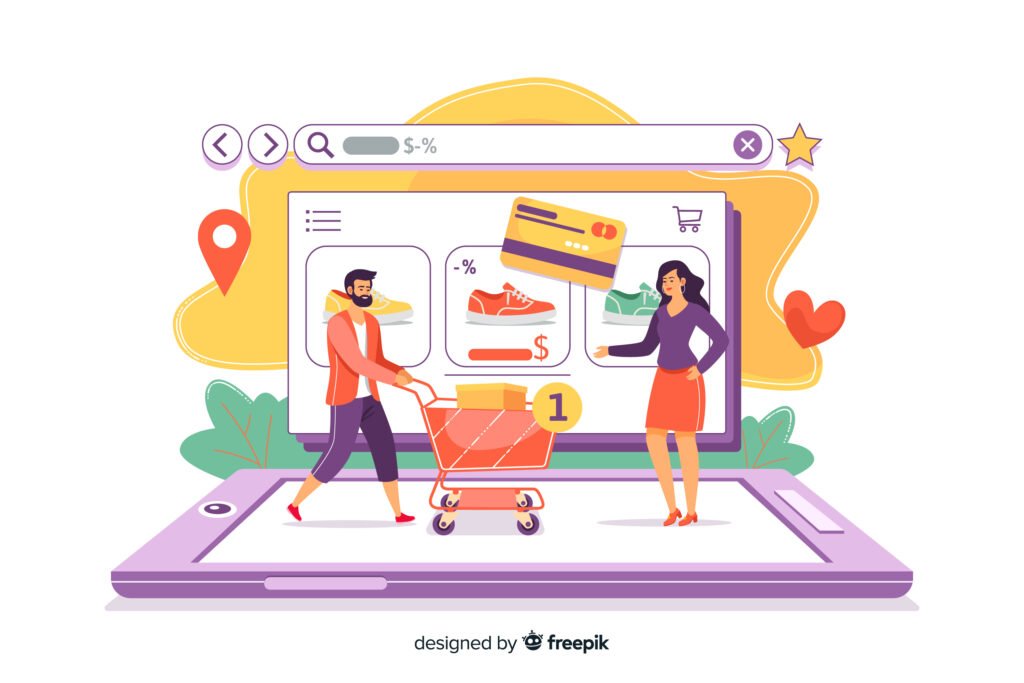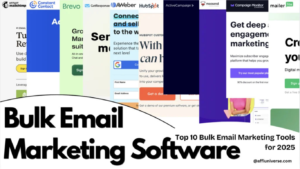What is D2C? What Does It Mean?
Understanding the Direct-to-Consumer Model
D2C stands for Direct-to-Consumer. It’s a business model where companies sell their products directly to customers, eliminating the need for intermediaries such as wholesalers, distributors, or retail stores.
In simple words, if a company makes something—like clothes, skincare products, or even gadgets—they sell it directly to you through their website or app. There’s no need for the product to sit on a store shelf or pass through a third-party seller.
Many popular brands today, especially those operating online, follow the D2C model. It gives them better control over how their products are priced, marketed, and delivered.
Some well-known examples of D2C brands include:
- Nike (when you buy directly from their website or app)
- Warby Parker (eyeglasses)
- Dollar Shave Club (grooming products)
- Glossier (beauty and skincare)
Why Are D2C Brands Becoming So Popular?
- They can sell at lower prices by cutting out the intermediary.
- Brands can build stronger relationships with their customers.
- They receive direct feedback, which helps them improve more quickly.
- Customers enjoy a more personalized shopping experience.
D2C vs Traditional Retail: Key Differences
Here’s a basic comparison to help you understand how D2C is different from the traditional retail method:
| Aspect | D2C (Direct-to-Consumer) | Traditional Retail |
|---|---|---|
| Sales Channel | Products are sold on the brand’s own website or store | Products are sold through third-party retailers (like malls or online marketplaces) |
| Customer Relationship | Direct communication with customers | Limited or no direct contact with customers |
| Pricing | Often lower because there are no middlemen | May include markup by retailers |
| Marketing Control | Brand controls all branding and marketing | Retailers may influence how the product is promoted |
| Customer Data | Brand collects direct data and feedback | Data is controlled by the retailer |
| Inventory Control | Full control over stock and supply | Shared or limited control |
Example to Understand Better
Let’s say you buy a pair of sneakers.
- In traditional retail, the brand sells the sneakers to a retailer (like a shoe store), and then you buy it from that store.
- In the D2C model, you go directly to the brand’s website, and they send the sneakers straight to your home.
Key Takeaways on the D2C Model
The D2C model is changing how we shop. It gives customers more convenience and helps brands offer better prices and service. As online shopping continues to grow, D2C will become even more common. Whether you’re a shopper or a business owner, understanding how D2C works can help you make smarter choices.
Why Are So Many Companies Pursuing the D2C Business Model?
In recent years, many companies have begun selling their products directly to customers, bypassing intermediaries such as wholesalers or retailers. This approach is called Direct-to-Consumer (D2C). Brands like Nike, Warby Parker, and Glossier are just a few examples that have embraced this model—and it’s easy to see why. Let’s break down the main reasons behind this growing trend.
Increased Profit Margins and Control
When companies sell through stores or distributors, a portion of the profit is allocated to these third parties. With the D2C model, businesses can eliminate the intermediaries and retain a greater share of the revenue from each sale. This leads to higher profit margins.
Also, when companies sell directly, they have more control over their pricing, product presentation, and brand messaging. They can decide how their website looks, how they talk to customers, and how to market their products without relying on retailers to do it for them.
Direct Customer Relationships
Another significant reason companies love the D2C model is the opportunity to connect directly with their customers. When you sell through a store, you don’t get to know who your customers are. However, when you sell through your website, you can communicate directly with them.
This enables brands to provide better customer service, better understand customer feedback, and foster loyalty. A happy customer is more likely to return, make another purchase, or recommend the product to others.
The Power of First-Party Data
With direct access to customers, companies can collect first-party data, meaning information directly from the individuals who purchase their products. This includes what they are buying, how frequently they shop, which pages they visit on the website, and even which marketing emails they open.
This data is extremely valuable. It helps businesses better understand their audience and make more informed decisions. They can use this information to create personalized offers, improve their products, and run more effective marketing campaigns.
Conclusion:
The D2C business model gives companies more control, better profits, closer customer relationships, and valuable data. As a result, it’s no surprise that more and more brands are choosing to go direct. It’s not just a trend—it’s a smarter way to grow in today’s digital world.
Challenges of D2C E-commerce
The Direct-to-Consumer (D2C) model is gaining popularity, with an increasing number of brands opting to sell their products directly to shoppers, bypassing third-party sellers or retail stores. This approach enables companies to exert greater control over their brand and achieve higher profit margins. However, it also brings several tough challenges. Here are some of the key issues D2C businesses often encounter.
High Customer Acquisition Costs
One of the biggest hurdles for D2C businesses is attracting new customers. Unlike large marketplaces that already have a substantial customer base, D2C brands must attract customers independently. This typically involves spending money on digital ads, influencer marketing, SEO, email campaigns, and other marketing efforts.
The problem is — these marketing efforts are expensive. Sometimes, the cost of acquiring a new customer is so high that it consumes a significant portion of the profit. Without a strong and cost-effective marketing strategy, it becomes challenging for D2C brands to grow sustainably.
Managing Logistics and Fulfillment
In a D2C setup, brands are responsible for the entire order process — from storing products to packing and delivering them. This may sound simple, but it’s often quite complex.
Small businesses, in particular, struggle with managing inventory, selecting reliable delivery partners, handling returns, and tracking shipping times. If anything goes wrong — such as a delayed order or a damaged package — the customer will likely blame the brand directly.
Without a robust logistics and fulfilment system, it becomes challenging to provide a seamless customer experience. This can lead to poor reviews and loss of trust.
Building Brand Trust and Loyalty
Customers are more likely to buy from a brand they trust. In D2C, where brands interact directly with customers, building trust is both a challenge and a necessity.
Unlike established retailers or marketplaces, new D2C brands often lack a strong reputation. Gaining customer trust takes time, consistent quality, excellent customer service, and honest communication. Even one bad experience can make a customer leave — and in today’s world, negative reviews spread fast online.
Also, keeping customers loyal is hard. With so many options available, people can easily switch to a competitor. D2C brands must consistently engage their customers with high-quality products, regular updates, loyalty programs, and personalised offers to maintain customer loyalty.
Challenges of Direct-to-Consumer Selling
Direct-to-consumer (D2C) selling has become a popular business model. It enables brands to sell their products directly to customers, eliminating the need for third-party retailers or distributors. While this model offers numerous advantages, such as increased control, better profit margins, and closer customer relationships, it also presents its own set of challenges.
Let’s explore some of the common problems D2C brands face:

Operational Complexity Without Middlemen
In a traditional setup, retailers or distributors handle tasks such as warehousing, shipping, customer service, and returns. However, However, in the D2C model, brands must manage all of this on their own.
This includes:
- Storing and managing inventory
- Handling orders and shipping
- Dealing with returns and complaints
- Ensuring smooth delivery
For small businesses or new brands, this can quickly become overwhelming. Managing everything without outside help requires time, money, and good systems. If anything goes wrong, it directly affects the customer’s experience and the brand’s reputation.
Data Security and Customer Expectations
D2C businesses collect a lot of customer data – from names and addresses to purchase history and payment details. While this data helps in offering better services and personalized marketing, it also creates a big responsibility.
Customers today expect their data to be kept safe and private. Even a minor data breach can erode trust and lead to legal complications.
Some challenges in this area include:
- Protecting customer data from hackers
- Following privacy laws (like GDPR or CCPA)
- Making sure customer support is quick and helpful
Customers also expect fast responses, seamless website experiences, and straightforward checkout processes. Meeting these high expectations can be tough for small teams or startups.
Navigating Digital Marketing Fatigue
Digital marketing is a powerful tool for D2C brands. However, with so many companies running ads, sending emails, and posting on social media, customers are often overwhelmed.
This is known as digital marketing fatigue.
Signs of fatigue include:
- Lower email open rates
- Unsubscribes or ad-blocking
- Less attention to social media posts
- More competition for attention online
To overcome this, D2C brands must be more creative and genuine in their approach to connecting with their audience. It’s not just about selling anymore – it’s about telling a story, building trust, and offering value.
D2C Data Mining Techniques
In the world of Direct-to-Consumer (D2C) businesses, knowing your customer is everything. Since D2C brands deal directly with buyers, they have access to rich customer data that enables them to make informed decisions and enhance the overall experience. Let’s look at some simple but powerful ways D2C brands use data to grow and succeed.
Using Customer Data for Personalization
One of the biggest advantages for D2C brands is the ability to offer a personalized shopping experience. They collect customer data from their websites, emails, and purchases to gain a deeper understanding of preferences and habits.
Some examples of useful customer data include:
- Pages visited or products viewed
- Items purchased in the past
- Time spent on certain categories
- Clicks on emails or ads
With this information, brands can create a shopping experience that feels tailor-made for each individual. They might:
- Send product suggestions based on your past views
- Offer discounts on items you’ve shown interest in
- Share updates on items that match your taste
This kind of personalization not only builds customer trust but also increases the chance of repeat purchases.
Predictive Analytics for Product Recommendations
D2C companies also use predictive analytics to stay one step ahead. This means they analyze customer behaviour and attempt to predict what someone might want next.
For example:
- If a customer buys a mobile phone, the system may suggest a phone case or headphones as the next purchase.
- If someone shops around festive seasons, they might get a reminder or special offer just before the next big holiday.
Predictive analytics enables brands to send the right message at the right time, resulting in higher engagement and improved sales.
Tools & Platforms for Data-Driven Insights
You don’t need to be a tech expert to use data. There are many easy-to-use tools available today that help D2C businesses track and understand customer behaviour. Some of the most popular tools include:
- Google Analytics – Great for seeing what visitors do on your website
- Shopify Reports – Helps online store owners track orders and customer actions
- Hotjar – This lets you watch how people interact with your website
- Klaviyo – Perfect for email marketing based on customer habits
- Power BI or Tableau – Turns complex data into simple charts and dashboards
How to Start a D2C Business
Direct-to-consumer (D2C) is a growing business model in which brands sell their products directly to customers through their websites, eliminating the need for intermediaries such as retailers or wholesalers. Starting a D2C business gives you more control over your brand, pricing, and customer experience. Here’s a simple guide on getting started.
Identify a Niche and Product-Market Fit
Before you jump in, it’s important to choose a niche that you’re passionate about, and that has a market demand. Ask yourself:
- What problem does my product solve?
- Who is my target audience?
- Are people already looking for this kind of product?
Do some market research. Examine what your competitors are doing, read reviews, and engage with potential customers. Identify a market gap or an area for improvement. The goal is to offer something of value that people want to purchase.
Build an E-Commerce Website (Shopify, WooCommerce, etc.)
Once you have your product idea, the next step is to set up your online store. You don’t need to know how to code to build a good-looking and functional website. Use easy-to-use platforms like:
- Shopify – Great for beginners, all-in-one solution
- WooCommerce – Ideal for WordPress users
- BigCommerce – Good for scaling a growing business
Ensure your website is mobile-friendly, loads quickly, and displays your products, pricing, and shipping details. Add high-quality product images and descriptions to establish trust and help customers make informed decisions.
Develop a Fulfillment and Shipping Plan
Customers expect fast and reliable delivery. So, planning how you’ll handle orders, packaging, and shipping is important. You can:
- Handle it yourself – Pack and ship from home or a small warehouse
- Use third-party logistics (3PL) – Companies like Shiprocket, ShipBob, or Amazon FBA can do it for you
- Dropshipping – Let a supplier ship directly to your customer (less control but less hassle)
Ensure that you clearly state shipping times and costs on your website. Additionally, plan how you’ll handle returns and refunds—it’s an essential part of building customer trust.
Build an Email and Social Media Presence
Marketing is key to growing your D2C brand. Start building your audience from the very beginning.
- Email marketing – Use tools like Mailchimp or Klaviyo to collect emails and send product updates, discounts, or tips. Email is an excellent tool for fostering long-term relationships with customers.
- Social media – Platforms like Instagram, Facebook, and TikTok are great for showcasing your product, running ads, and engaging with your community.
Post regularly, use visuals, and talk to your audience like a friend. Consistency and authenticity are what win trust.
Top D2C Marketing Strategies That Work
Direct-to-consumer (D2C) brands are experiencing rapid growth in 2025. With the power of online platforms, many businesses are skipping intermediaries and selling straight to their customers. However, in a competitive space, effective marketing strategies are crucial. Here are some proven D2C marketing methods that work, helping brands grow stronger and faster.
Influencer and Affiliate Marketing
One of the easiest ways to gain trust is through someone your audience already follows. That’s where influencer marketing comes in. Whether it’s a YouTuber, an Instagram creator, or a TikTok personality, their followers value their recommendations. D2C brands use them to promote products naturally.
Affiliate marketing also works well. In this model, partners promote your product and earn a small commission for each sale they bring. It’s cost-effective and helps you reach new audiences quickly.
Email Automation and Retargeting
Many visitors check out your website but don’t make a purchase right away. That’s why email automation and retargeting are must-haves. You can set up automated emails to follow up with customers who abandoned their cart or viewed a product.
Retargeting ads (on Facebook, Google, or Instagram) display your product again to users who have visited your site previously. These smart reminders can increase your chances of turning a visit into a sale.
Content Marketing and SEO for Brand Awareness
Content marketing helps you educate and inform your audience. You can create blog posts, how-to videos, or product guides to build trust. When people find your content helpful, they’re more likely to buy from you.
Pair this with search engine optimization (SEO), and your content can rank higher in Google’s search results. This brings in free, organic traffic over time. Good content combined with good SEO equals long-term brand visibility.
Personalization and Customer Loyalty Programs
Today’s customers want to feel special. That’s why personalization matters. Send emails using the customer’s name, show them product suggestions based on their preferences, and offer deals on their birthday. These small touches build a stronger connection.
Loyal customers should also be rewarded. Use loyalty programs that offer points for every purchase, early access to sales, or discounts for referrals. This keeps people coming back and turns buyers into brand advocates.
Build an Email and Social Media Presence
A strong email list is gold for any D2C brand. It’s your direct way to talk to customers. Share product launches, exclusive offers, and helpful tips to keep your audience engaged and informed.
At the same time, maintain an active social media presence. Platforms like Instagram, Facebook, and Pinterest help you visually showcase your brand, interact with customers, and stay top of mind. Consistent posting, stories, and reels can build a loyal following and drive traffic to your website.
Challenges in Running a D2C Brand
Running a Direct-to-Consumer (D2C) brand sounds exciting – you get to connect directly with your customers, avoid intermediaries, and keep more of your profits. But as great as it sounds, there are several challenges that brands often face when running a D2C business. Let’s explore some common issues and how they can be addressed.

Scaling While Maintaining Quality
One of the biggest challenges for any growing D2C brand is maintaining product quality while expanding its operations. When a brand starts getting more orders, it can be tempting to rush production or cut corners to meet demand. However, customers notice when quality drops and a single bad experience can lead to a lost customer or even negative online reviews.
To avoid this, brands must invest in better manufacturing systems, train their staff, and do regular quality checks. It’s also important to grow step by step rather than scaling too fast and risking quality.
Managing Customer Support
When you’re selling directly to customers, they expect fast and helpful customer support. Whether it’s questions about orders, product returns, or shipping delays—support can quickly become overwhelming as your customer base grows.
D2C brands need to establish effective support systems, including live chat, email, and even AI-powered helpdesks. A friendly and trained support team can turn unhappy customers into loyal ones. Quick replies and honest communication make a big difference.
Keeping Up with Market Trends and Competitors
The online shopping world changes fast. New trends, changing customer behaviours, and strong competition make it hard to stay ahead. If your brand doesn’t keep up, customers might move on to newer, trendier options.
To stay relevant, brands should regularly research the market, listen to their customers, and follow competitors’ strategies. Using tools like Google Trends, customer feedback surveys, and social media listening can help brands stay updated and adjust their strategy accordingly.
Personalization and Customer Loyalty Programs
Customers today want more than just a product—they want a personalized experience. This means brands need to remember customer preferences, recommend products they might like, and send customized messages tailored to each customer.
Creating a good loyalty program is also important. Offer points, discounts, early access to sales, or freebies to encourage customers to return. Personalization and loyalty foster trust, which can lead to increased repeat purchases.
Build an Email and Social Media Presence
Email and social media are two powerful tools for D2C brands. Email helps you connect with customers directly, share offers, and keep them updated. Social media enables you to engage, showcase your brand’s personality, and expand your audience.
To build a strong presence, post regularly, reply to comments and messages, and share content that your audience likes. Emails should be clear, not spammy, and offer value—like discounts, tips, or new arrivals. Building a good email list and an active social media profile takes time, but it pays off in increased customer engagement and sales.
Conclusion:
Is D2C the Future of E-commerce?
The world of e-commerce is changing rapidly, and one of the most significant shifts we are witnessing is the rise of Direct-to-Consumer (D2C) brands. But what does this mean for the future of online shopping?
D2C refers to companies selling their products directly to customers, thereby bypassing intermediaries such as large retail stores or online marketplaces. This gives brands more control over their pricing, marketing, and customer relationships. At the same time, it allows shoppers to connect more personally with the brands they love.
One of the primary reasons D2C is growing is that it provides customers with a better and more personalised experience. Many people today want more than just a product — they want to feel connected to a brand. D2C companies can offer this by utilising customer data to send personalised messages, offer exclusive discounts, and enhance their service.
Social media and digital marketing also play a big role in D2C’s success. Brands can now reach people directly through platforms like Instagram, Facebook, and YouTube without needing a huge advertising budget. Even small businesses can build loyal communities and grow quickly.
But it’s not all easy. Running a D2C brand also presents challenges, including managing shipping, customer support, and finding ways to attract new customers. Still, many businesses find that the benefits outweigh the challenges, especially when utilising the right tools and strategies.
So, is D2C the future of e-commerce? The answer seems to be yes — at least in part. While big marketplaces like Amazon and Walmart are unlikely to disappear anytime soon, an increasing number of brands are opting for the D2C (Direct-to-Consumer) route to differentiate themselves and establish lasting relationships with their customers.
In short, D2C is not just a trend — it’s a thriving business model that’s shaping the future of online shopping. Whether you are a shopper or a business owner, it’s worth keeping an eye on how D2C brands are changing the way we buy and sell online.




